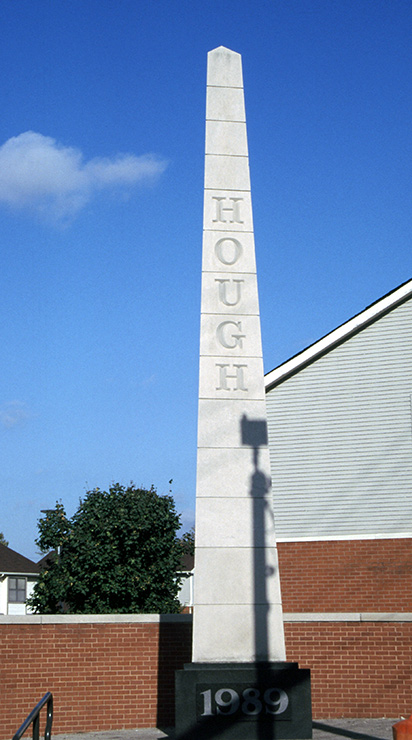Hough District
East of Downtown along Euclid Avenue, a substantial black population in Hough District can be traced back to 1910. As the first large wave of African Americans arrived many had the fortune of attending Central High School.

In its heyday from the 1920s to 1950s, this black community of single-family homes was the place to see and be seen. Hough District had well over 60,000 proud residents.
Like many other black communities in the 1950s and 1960s, aspirations rose in Hough District, even as the white middleclass tax base started drifting to the suburbs for larger homes, yards and shopping malls. New freeways and boulevards made longer-distance commutes to downtown possible. With the exit of jobs from the city, blue-collar jobs declined in Cleveland and other American cities.
It always seems to be the case that a few “rouge cowboys” with no respect for the U.S. Constitution stayed behind in city police departments. Police brutality escalated. Suffering economic deprivation and increasing police brutality, things came to a boil in the Hough District in 1966. Though an emotional public response to continuing discriminatory practices and police brutality is understandable, riots are not. But the riots came anyway, bringing consequences far greater than anyone bargained for.
Some suggest that race riots in the Hough District unified enough Cleveland voters to elect their first black mayor in 1967. Even if true, a multidimensional view of Hough District shows that the bad of violence, far outweighs any political good. Small businesses were lost. Most middle-class African-Americans moved to calmer neighboring suburbs in East Cleveland, Shaker Heights and Cleveland Heights. The once proud district suffered decades of decline.
It would be a mischaracterization however, to suggest the forces of good had no impact at that time. Peaceful activism led McDonald’s to license a black franchisee in the Hough District. That huge milestone sped up the day when African-Americans could obtain all manner of franchise businesses nationwide. Hough District also kept a culturally activist spirit as witnessed by Karamu House.
Today, Hough District is home to just under 20,000 residents and community redevelopment initiatives are having a positive impact. Artifacts of despair from the riots are being removed without mass gentrification. Nothing here is more poignant than the remarkable Hough District Monument pointing upwards, like the spirits of the community.
